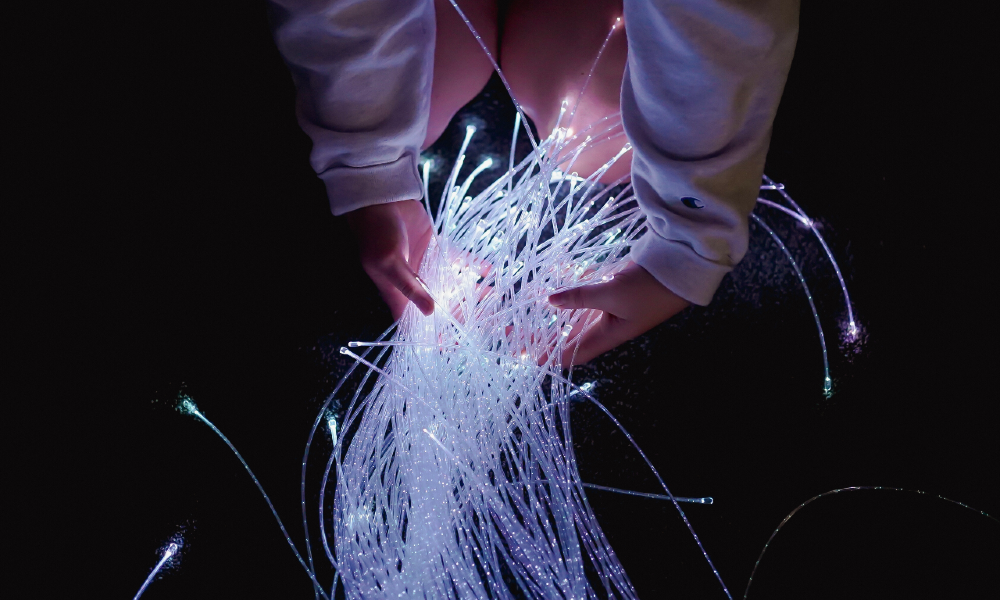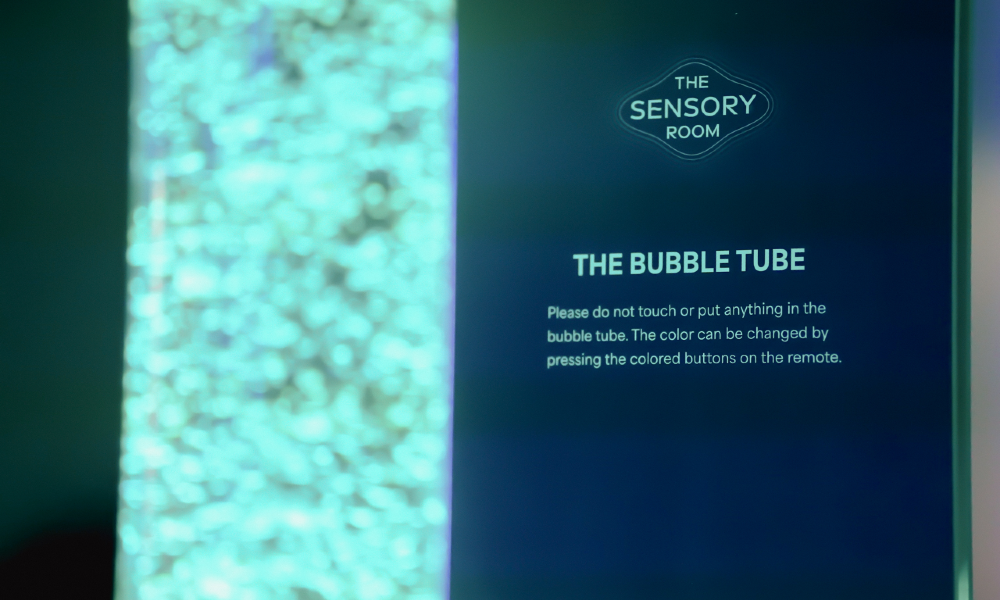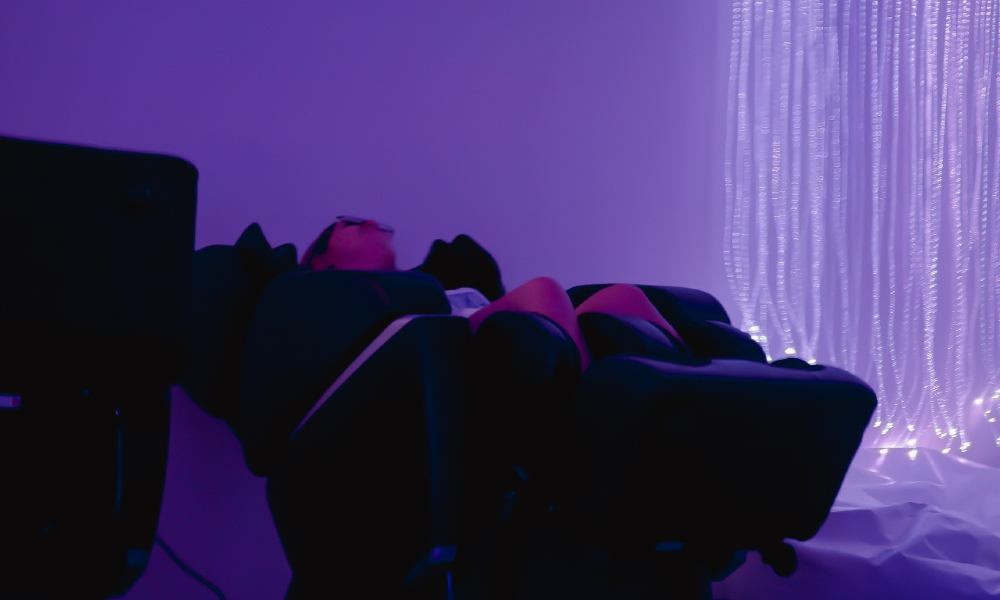Creating calm: JMU’s new Sensory Room leads the way in student well-being
News
SUMMARY: The new Sensory Room, located in King Hall, offers a safe space for autistic individuals and other sensory-sensitive groups, to take a break, decompress and re-center themselves.
Step inside the new Sensory Room on East Campus, and you’ll discover a world of sensory experiences designed to promote relaxation, focus and comfort. The room features color-changing fiber optics that create a calming atmosphere, a mesmerizing bubble tube and bench for visual engagement without overwhelming the senses, cozy bean bag chairs that provide a sense of security, a vibroacoustic lounge chair playing therapeutic frequencies to stimulate relaxation, and gel mats to engage the sense of touch.

This specially designed room offers a safe space for autistic individuals and other sensory-sensitive groups, to take a break, decompress and re-center themselves. It provides relief from overwhelming stimuli like bright lights and distracting noises.
“Sometimes it’s as simple as a different seating arrangement. Sometimes it’s the lights,” said Kristina Blyer, assistant vice president for health and well-being, describing the thoughtful attributes that can make all the difference. Faculty are embracing the opportunity to better support neurodivergent students, and the Sensory Room has become a critical part of that mission.
“I’m there all the time,” said student Reese Secord. “The massage chairs are a huge favorite, and I love laying on the bean bag under the mirror on the ceiling! I feel like there’s no stress. I love it.”
While other universities have similar rooms, JMU stands out with its vibroacoustic lounger — a unique addition that uses sound therapy to promote mental and physical healing. This makes the university a leader in innovative approaches to well-being.

“Different elements will appeal to different individuals, and we are eager to see which features are most popular with our students,” said Jeffrey Tang, interim dean of the College of Integrated Science and Engineering.
Beyond offering a place to unwind, the Sensory Room holds exciting possibilities for research. Faculty are already exploring how it could be used for counseling sessions, mindfulness practices, yoga and group activities. Research into the room’s impact on students and how it could be integrated into the curriculum opens up new academic pathways.
“When I proposed this space, part of the agreement with the university was that it would be used for research,” Blyer explained. “Now, I’m partnering with Robin Anderson from the Graduate Psychology program and one of her students on an Institutional Review Board-approved study of the room’s effects.”
The Sensory Room wouldn’t have become a reality without the dedication of key players like Blyer and Tang, along with support from Tim Miller (’96, ’00M), vice president of Student Affairs. Together, they’ve created a space that’s already making an impact across campus.
|
“This Sensory Room is a powerful reminder of our dedication to creating spaces where all students can thrive.” |
“CISE has always been committed to fostering inclusive environments for all students,” Tang said. “Our faculty recognize that diversity isn’t just about what we see — it encompasses so much more. This Sensory Room is a powerful reminder of our dedication to creating spaces where all students can thrive. By partnering with Student Affairs to develop and promote this sensory room, we reaffirm our commitment to supportive spaces for students.”
As feedback from students and faculty continues to shape its development, the Sensory Room promises to become a cornerstone of well-being on campus. Located in EnGeo 0301, it’s open to anyone with a JACard.
